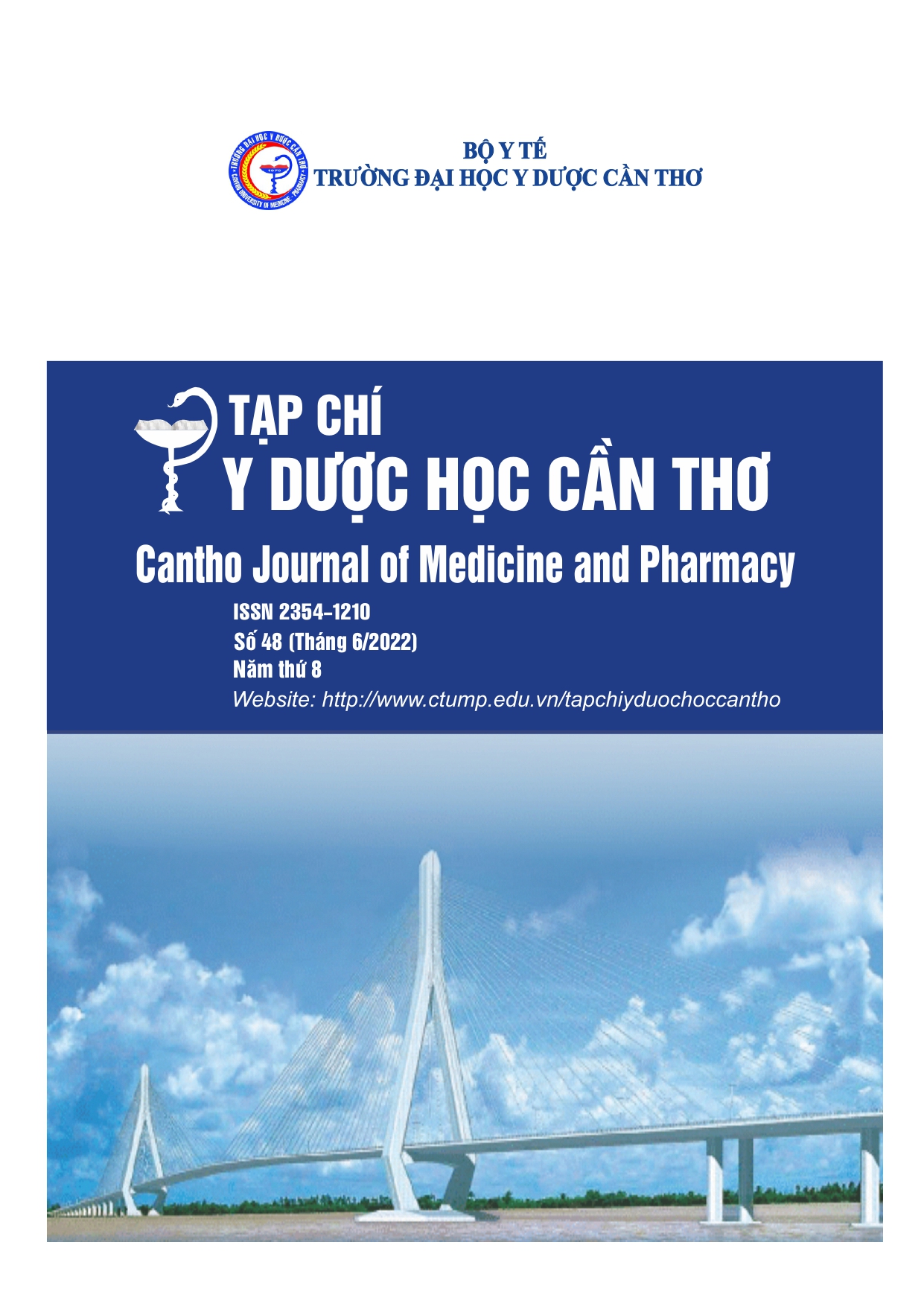DETERMINATION OF PLANT CHARACTERISTICS AND GENE SEQUENCE OF INDIAN MANGROVE IN VIETNAM
Main Article Content
Abstract
Background: Mam trees (Indian mangrove) distributed in many coastal areas from the North to the South of Vietnam. Currently, there is no study on plant characteristics and genetic sequence to accurately identify the species name. Objectives: Determining plant characteristics and studying gene sequence to accurately identify the scientific name of Indian mangrove that were collected in 3 districts in Ca Mau province, Vietnam. Materials and methods: The roots, stems, and leaves of Indian mangrove were collected in 3 different districts in Ca Mau province which were cut, dyed, observed under optical microscope and characterized. Research on gene sequencing based on the Bold System and comparison by Blast method on NCBI gene bank system to identify species. Results: Botanical features and genetic characterizations of Indian mangrove grown in Vietnam was conducted on three samples collected in Ca Mau province, by RBCL gene sequencing, as it is commonly used. In the study of species differentiation, samples of Indian mangrove are suitable to be classified into three groups due to their differences in morphology and genotype. Conclusions: This gene sequence study has determined that the scientific name of Indian mangrove which were collected in 3 different districts of Ca Mau province is Avicennia officinalis and belongs to the Acanthaceae family.
Article Details
Keywords
Avicennia officinalis, Black sauce, botanical characteristic, genetic
References
2. Trương Thị Đẹp (2007), “Thực vật dược”, Nhà Xuất Bản Giáo Dục, Hà Nội.
3. Phạm Hoàng Hộ (2003), “Cây cỏ Việt Nam”, quyển II, Nhà xuất bản, tr.843.
4. Chen, S., et al. (2010), “Validation of the ITS2 region as a novel DNA barcode for identifying medicinal plant species”, PLoS One, 5(1), e8613.
5. CBOL Plant Working Group (2009), “A DNA barcode for land plants”, Proceedings of the National Academy of Sciences, USA.
6. Doyle, J.J., Doyle, J.L. (1990), “Isolation of plant DNA from fresh tissue”, Focus, 12, pp.13-15.
7. Das, S.K.; Samantaray, D.; Sahoo, S.K.; et al. (2019), “Bioactivity guided isolation and structural characterization of the antidiabetic and antioxidant compound from bark extract of Avicennia officinalis L.”, South African Journal of Botany, 125, pp.109-115.
8. Hall, T.A. (1999), “BioEdit: a user - friendly biological sequence alignment editor and analysis program for 95/98/NT”, Nucleic Acids Symposium Series, 41, pp.95-98.
9. Istvan, L., GelAnalyzer version (2010), available at: http://www.gelanalyzer.com.
10.Levin, R.A., Wagner, W.L., Hoch, P.C., et al. (2003), “Family-level relationships of Onagraceae based on chloroplast rbcL and ndhF data”, American Journal of Botany, vol.90, pp.107-115.
11.Sanger, S., Nicklen, S., and Coulson, A.R (1977), “DNA sequencing with chain-terminating inhibitors”, Proceedings of the National Academy of Sciences, USA, 74, pp.5463-5467.
12. Saddhe, A., Jamdade, R.A. and Kumar, K., (2016), “Phylogenetic assessment of mangroves in Goa, west coast India using DNA barcode markers”, Biological sciences.
13. Shigeyuki Baba, Hung Tuck Chan, Nozomi Oshiro, et al. (2016), “Botany uses chemistry and bioactivities of mangrove plants IV: Avicennia marina”, ISME/GLOMIS Electronic Journal, 14, pp.1880-7682.
14. Wu Zhengyi, Peter H. Raven, Hong Deyuan (1994), “Science Press (Beijing) & Missouri Botanical Garden (St. Louis)”.


